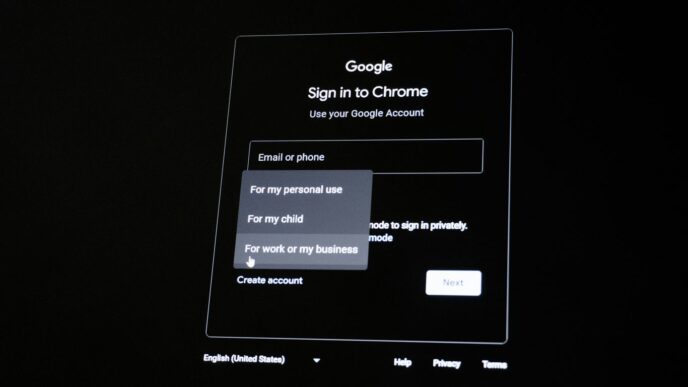Artificial Intelligence (AI) is changing healthcare in many exciting ways. From helping doctors make better decisions to improving patient care, AI is becoming a vital part of modern medicine. This article explores how AI is used in diagnostics and what it means for the future of healthcare.
Key Takeaways
- AI helps doctors diagnose diseases faster and more accurately.
- It can analyze large amounts of medical data, improving patient outcomes.
- AI is used in medical imaging to detect conditions like cancer early.
- Virtual health assistants powered by AI support patients around the clock.
- Ethical concerns, such as data privacy, must be addressed as AI grows in healthcare.
The Evolution of AI-Powered Diagnostics
Historical Milestones in AI and Healthcare
The journey of AI in healthcare began decades ago, with early systems attempting to assist in diagnosis. In the 1980s and 1990s, research shifted towards machine learning (ML) and neural networks, allowing machines to learn from data. This paved the way for significant advancements in diagnostic tools.
Key Technologies Driving AI Diagnostics
Several technologies have been crucial in the evolution of AI diagnostics:
- Machine Learning (ML): Helps in analyzing vast amounts of data to identify patterns.
- Deep Learning: Utilizes neural networks to improve accuracy in diagnosis.
- Natural Language Processing (NLP): Enables systems to understand and process human language, enhancing communication in healthcare settings.
Early Success Stories in AI Diagnostics
AI has shown promise in various diagnostic applications. For instance:
- Breast Cancer Detection: AI systems have demonstrated higher sensitivity in diagnosing breast cancer compared to human radiologists.
- Automated Blood Cultures: AI has improved efficiency in clinical laboratories, providing results within 24 to 48 hours.
- Emergency Department Support: AI tools assist in triaging patients, optimizing resource allocation, and reducing waiting times.
The integration of AI in healthcare is not just about technology; it’s about improving patient outcomes and making healthcare more efficient.
AI continues to evolve, and its role in diagnostics is becoming increasingly vital, promising a future where healthcare is more accurate and accessible.
AI-Powered Diagnostics in Clinical Decision-Making
Enhancing Accuracy and Speed
AI is transforming how healthcare providers make decisions. With AI, doctors can access real-time data, which helps them make quicker and more accurate diagnoses. This technology analyzes vast amounts of information, allowing for better patient evaluations and treatment plans.
Reducing Diagnostic Errors
One of the biggest challenges in healthcare is diagnostic errors. AI can help reduce these mistakes by:
- Analyzing patient data more thoroughly.
- Providing decision support tools that suggest possible diagnoses.
- Alerting healthcare providers to critical information that may be overlooked.
Case Studies of AI in Clinical Settings
Several hospitals have successfully integrated AI into their systems. For example:
- A major hospital used AI to improve emergency room efficiency, reducing wait times by 30%.
- Another facility implemented AI for diagnosing heart conditions, leading to a 20% increase in accurate diagnoses.
- A third case involved AI assisting in cancer detection, which improved early diagnosis rates significantly.
AI is not just a tool; it’s a partner in healthcare, helping professionals make better decisions for their patients.
In summary, AI-powered diagnostics are crucial in clinical decision-making, enhancing accuracy, reducing errors, and providing valuable insights through real-world applications.
AI in Medical Imaging and Radiology
AI Algorithms for Image Analysis
Artificial Intelligence (AI) is changing how we analyze medical images. AI algorithms can quickly process images, helping doctors make faster decisions. These algorithms can:
- Detect abnormalities like tumors or fractures.
- Analyze X-rays, MRIs, and CT scans with high accuracy.
- Provide quantitative measurements for better diagnosis.
Early Detection of Diseases
AI plays a crucial role in spotting diseases early. For instance, studies show that AI can detect conditions like skin cancer and pneumonia more accurately than human radiologists. Here’s a quick comparison:
| Condition | AI Sensitivity | Radiologist Sensitivity |
|---|---|---|
| Skin Cancer | 90% | 78% |
| Pneumonia | 96% | 50% |
Comparing AI and Human Radiologists
While AI is impressive, it’s important to understand its strengths and weaknesses compared to human radiologists. Here are some points to consider:
- Speed: AI can analyze images much faster than humans.
- Accuracy: AI often has higher accuracy rates in detecting certain diseases.
- Collaboration: AI can assist radiologists, but human expertise is still vital for complex cases.
AI is not here to replace radiologists but to enhance their capabilities, making healthcare more efficient and effective.
Personalized Medicine Through AI-Powered Diagnostics

Tailoring Treatments to Individual Patients
Personalized medicine, also known as precision medicine, focuses on customizing healthcare for each patient. This approach considers unique factors such as genetics, lifestyle, and environment. By using AI, doctors can analyze vast amounts of data to find the best treatment for each individual. AI helps in predicting how patients will respond to different therapies, making treatments more effective.
Predictive Analytics for Better Outcomes
AI can analyze patterns in patient data to predict health outcomes. This means that doctors can make informed decisions about treatments before they even start. Here are some key benefits of using predictive analytics in personalized medicine:
- Improved treatment effectiveness
- Reduced side effects
- Faster recovery times
Real-World Applications of Personalized Medicine
In real-world settings, AI is already making a difference. For example, AI systems can help identify the right medications for cancer patients based on their genetic profiles. This leads to better treatment plans and improved patient satisfaction. Here’s a quick overview of how AI is used in personalized medicine:
| Application | Description |
|---|---|
| Cancer Treatment | Tailoring chemotherapy based on genetic data |
| Chronic Disease Management | Customizing care plans for diabetes patients |
| Mental Health | Predicting responses to antidepressants |
AI is transforming healthcare by making treatments more personalized and effective, ultimately leading to better patient outcomes.
AI in Drug Discovery and Development
Accelerating Drug Development
Artificial Intelligence (AI) is changing how drugs are discovered and developed. AI can speed up the process by analyzing large amounts of data quickly. This helps researchers find new drugs faster than traditional methods. Here are some key ways AI is making a difference:
- Data Analysis: AI can sift through vast amounts of data to identify potential drug candidates.
- Predictive Modeling: It can predict how drugs will behave in the body, which helps in selecting the right candidates for further testing.
- Cost Reduction: By streamlining processes, AI can help lower the costs associated with drug development.
Predicting Drug Reactions
AI also plays a crucial role in predicting how patients will respond to medications. This is important for ensuring safety and effectiveness. Some benefits include:
- Personalized Treatment: AI can tailor drug recommendations based on a patient’s unique genetic makeup.
- Risk Assessment: It helps identify patients who might experience adverse reactions to certain drugs.
- Improved Outcomes: By predicting reactions, healthcare providers can make better treatment choices.
AI in Clinical Trials
AI is transforming clinical trials by:
- Recruitment: AI can identify suitable candidates for trials more efficiently.
- Monitoring: It helps in real-time monitoring of patient data during trials.
- Data Analysis: AI can analyze trial results faster, leading to quicker decisions about drug approval.
AI is not just a tool; it’s a partner in the journey of drug discovery, helping to create safer and more effective treatments for patients.
| Aspect | Traditional Method | AI-Enhanced Method |
|---|---|---|
| Data Processing Speed | Slow | Fast |
| Cost of Development | High | Lower |
| Patient Recruitment Time | Lengthy | Quick |
AI-Powered Virtual Health Assistants
24/7 Patient Monitoring
Virtual health assistants are changing how we think about patient care. They are available around the clock, making it easier for patients to get help whenever they need it. These assistants can monitor patients’ health and send updates to doctors, ensuring that everyone stays informed.
Improving Patient Engagement
These digital helpers can also boost patient engagement. They can:
- Answer common health questions.
- Remind patients to take their medications.
- Schedule doctor appointments.
By doing these tasks, virtual health assistants allow healthcare providers to focus on more complex issues, improving overall care.
Examples of AI Health Assistants
Several AI health assistants are already making a difference:
- NHS Chatbot: Used by over 1.2 million people to answer medical questions.
- Smart Speakers: Help elderly patients manage their health without needing a smartphone.
- Mental Health Apps: Provide support and therapy options anytime.
Virtual health assistants are not just tools; they are partners in healthcare, helping to bridge the gap between patients and providers.
These innovations are essential as they help reduce the workload on healthcare professionals while improving patient outcomes. With the rise of AI-powered technologies, the future of healthcare looks promising.
Ethical Considerations in AI-Powered Diagnostics
Privacy and Data Security
In the age of AI, protecting patient data is more important than ever. With the rise of AI in healthcare, there are significant concerns about how patient information is collected, stored, and used. Here are some key points to consider:
- Data breaches can lead to unauthorized access to sensitive information.
- Cybersecurity measures must be robust to prevent attacks.
- Patients should be informed about how their data is used and stored.
Bias in AI Algorithms
AI systems can sometimes reflect biases present in the data they are trained on. This can lead to unfair treatment of certain groups. To combat this:
- Regularly audit AI algorithms for bias.
- Use diverse datasets for training.
- Involve healthcare professionals in the development process.
Regulatory and Compliance Issues
As AI technology evolves, so do the regulations surrounding it. Key considerations include:
- The need for clear guidelines from regulatory bodies.
- Ensuring that AI tools meet safety and efficacy standards.
- Continuous monitoring of AI systems in clinical settings.
The integration of AI in healthcare must prioritize ethical standards to ensure that technology serves all patients fairly and effectively.
In summary, while AI has the potential to transform healthcare, it is crucial to address these ethical considerations to build trust and ensure patient safety.
Challenges in Implementing AI-Powered Diagnostics
Integration with Existing Systems
Integrating AI into current healthcare systems can be quite difficult. Many healthcare providers use older systems that may not work well with new AI technologies. This can lead to delays in patient care and increased costs. Here are some key points to consider:
- Compatibility issues with existing software
- Need for training staff on new systems
- Potential disruptions during the transition
Training Healthcare Professionals
Healthcare professionals need proper training to use AI tools effectively. Without this training, they may not trust or understand the AI systems, which can lead to poor decision-making. Important aspects include:
- Understanding AI capabilities and limitations
- Learning how to interpret AI-generated data
- Continuous education as AI technology evolves
Overcoming Technical Barriers
Technical challenges can hinder the successful implementation of AI in diagnostics. These barriers can include:
- Data quality: Poor quality data can lead to inaccurate results.
- Privacy concerns: Protecting patient data is crucial and can complicate AI use.
- Bias in algorithms: If AI systems are trained on biased data, they may produce unfair outcomes.
Addressing these challenges is essential for the successful integration of AI in healthcare. By focusing on training, system compatibility, and technical issues, we can unlock the full potential of AI-powered diagnostics.
The Future of AI-Powered Diagnostics
Emerging Technologies and Innovations
The future of AI in healthcare is bright, with new technologies emerging that can change how we diagnose and treat diseases. Some of the most exciting innovations include:
- Deep learning algorithms that can analyze medical images more accurately.
- Wearable devices that monitor health in real-time.
- Natural language processing to help doctors understand patient data better.
Potential Impact on Global Health
AI has the potential to make a significant impact on global health by:
- Improving access to healthcare in remote areas.
- Reducing costs associated with diagnostics and treatments.
- Enhancing patient outcomes through personalized medicine.
Predictions for the Next Decade
Experts predict that in the next ten years, AI will:
- Become a standard tool in clinical decision-making.
- Help in early detection of diseases, leading to better treatment options.
- Support healthcare professionals by providing real-time insights during patient care.
The integration of AI in healthcare is not just a trend; it is a revolution that will reshape how we approach medical diagnostics and treatment.
AI’s role in diagnostics is still evolving, but its potential is enormous. As we continue to develop and refine these technologies, we can expect a future where healthcare is more efficient, accurate, and accessible for everyone.
Highlights
- New technologies are emerging.
- Improving access to healthcare.
- Revolution in medical diagnostics.
AI in Population Health Management

Identifying Health Trends
AI plays a crucial role in identifying health trends within populations. By analyzing large datasets, AI can uncover patterns that help healthcare providers understand the health needs of different communities. This can lead to better resource allocation and targeted health initiatives.
Proactive Healthcare Interventions
With the help of AI, healthcare systems can implement proactive healthcare interventions. For example, predictive analytics can identify individuals at risk of chronic diseases, allowing for early interventions that can improve health outcomes. Here are some key areas where AI can make a difference:
- Chronic disease prevention: Identifying patients at risk of conditions like diabetes or heart disease.
- Hospital readmission reduction: Predicting which patients are likely to return to the hospital and providing support to prevent this.
- Resource optimization: Ensuring that healthcare resources are used efficiently based on population needs.
Improving Public Health Outcomes
AI can significantly contribute to improving public health outcomes. By analyzing data on disease prevalence and demographics, AI can help public health officials make informed decisions. For instance, AI can assist in:
- Tracking disease outbreaks: Quickly identifying and responding to outbreaks.
- Enhancing vaccination efforts: Ensuring vaccines are distributed where they are most needed.
- Evaluating health programs: Assessing the effectiveness of public health initiatives.
AI is transforming how we manage population health by providing insights that lead to better health outcomes for everyone.
In summary, AI’s ability to analyze vast amounts of data allows for a more proactive approach to healthcare, ultimately leading to healthier populations and improved public health strategies.
AI-Powered Diagnostics in Remote and Rural Healthcare
Bridging the Healthcare Gap
AI technology is making a significant impact in remote and rural areas where healthcare access is often limited. AI tools can help bridge the gap by providing essential diagnostic services that may not be available locally. Here are some ways AI is helping:
- Telemedicine: AI enables remote consultations, allowing patients to receive care without traveling long distances.
- Mobile Health Applications: These apps can analyze symptoms and provide preliminary diagnoses, guiding patients on the next steps.
- Data Collection: AI can gather and analyze health data from remote populations, helping to identify trends and health needs.
Telemedicine and AI
Telemedicine combined with AI is transforming how healthcare is delivered in rural settings. Here are some benefits:
- Accessibility: Patients can connect with specialists without the need for travel.
- Cost-Effectiveness: Reduces the costs associated with in-person visits.
- Real-Time Monitoring: AI can track patient health metrics and alert healthcare providers to any concerning changes.
Success Stories from Remote Areas
Several success stories highlight the effectiveness of AI in rural healthcare:
- Remote Diagnosis: In a rural clinic, AI tools helped diagnose a rare disease that would have otherwise gone unnoticed.
- Community Health Workers: AI applications have empowered local health workers to provide better care through enhanced training and resources.
- Emergency Response: AI systems have improved response times in emergencies by predicting patient needs based on historical data.
AI is not just a tool; it’s a lifeline for many in remote areas, ensuring they receive timely and accurate healthcare services.
Conclusion
In summary, AI is changing healthcare in amazing ways. It helps doctors make better decisions and improves how patients are treated. By spotting patterns in large groups of people, AI allows for care that is tailored to each person, which can lead to better health results. Beyond just treating patients, AI is also useful in research and managing health for communities. While there are important concerns about keeping patient information safe, new technologies can help address these issues. As AI continues to grow, it promises to make healthcare smarter, faster, and more personal, ultimately leading to a healthier future for everyone.
Frequently Asked Questions
What is AI in healthcare?
AI in healthcare refers to the use of computer systems to analyze medical data, help doctors make decisions, and improve patient care.
How does AI help in diagnosing diseases?
AI can quickly analyze large amounts of medical data and images, making it easier to spot diseases early and accurately.
What are some examples of AI in medicine?
Examples include AI systems that read X-rays, chatbots that assist patients, and software that helps in drug discovery.
Can AI replace doctors?
No, AI is designed to assist doctors, not replace them. It helps by providing information and recommendations.
What are the benefits of using AI in healthcare?
AI can improve the speed and accuracy of diagnoses, reduce costs, and enhance patient experiences.
How does AI ensure patient privacy?
AI systems use strong security measures to protect patient information and comply with privacy laws.
What challenges do hospitals face when using AI?
Some challenges include integrating AI with existing systems, training staff, and ensuring data quality.
What does the future hold for AI in healthcare?
The future looks promising, with AI expected to play a bigger role in personalized medicine, predictive analytics, and improving overall healthcare.













